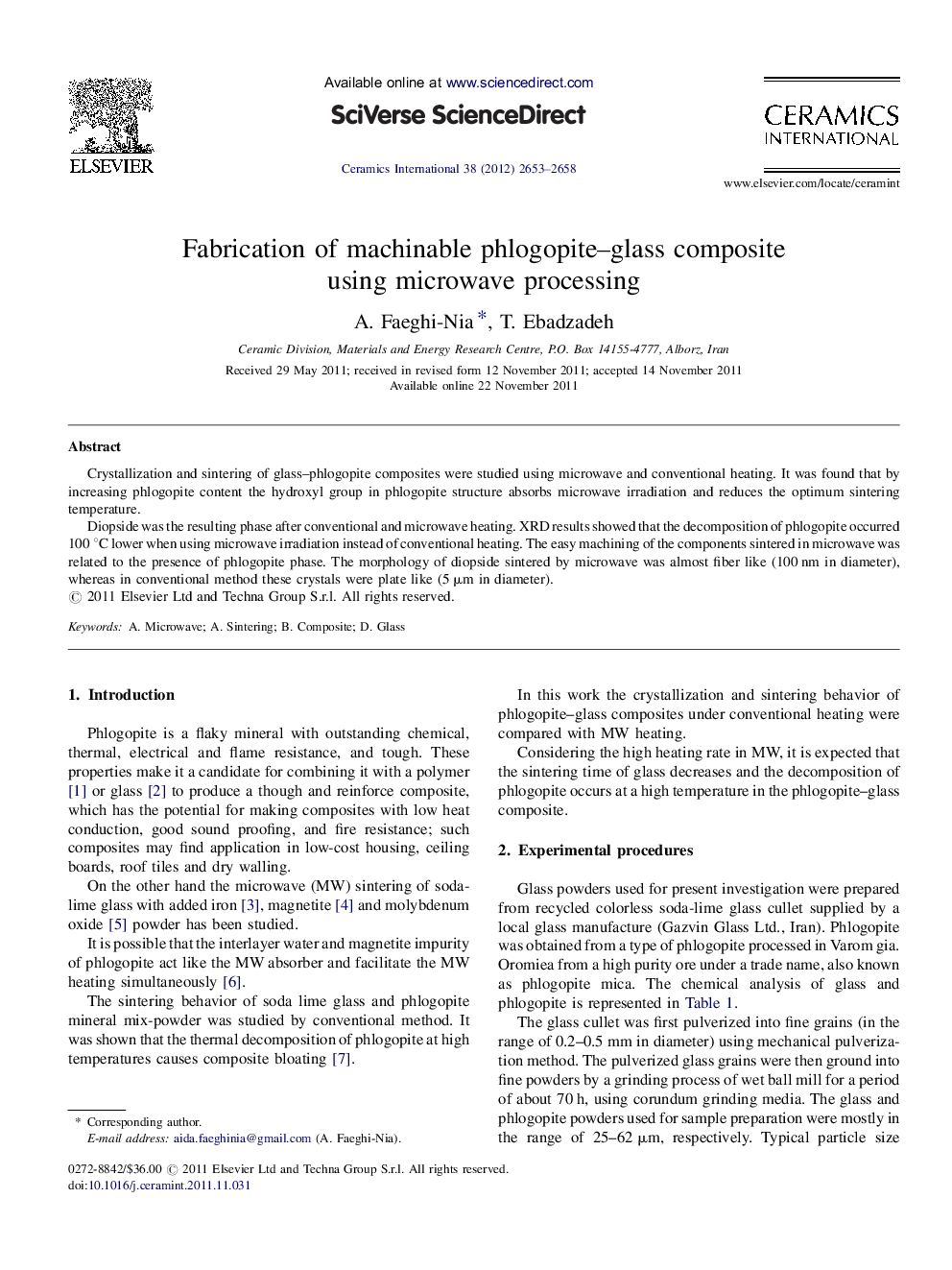| Article ID | Journal | Published Year | Pages | File Type |
|---|---|---|---|---|
| 1463534 | Ceramics International | 2012 | 6 Pages |
Crystallization and sintering of glass–phlogopite composites were studied using microwave and conventional heating. It was found that by increasing phlogopite content the hydroxyl group in phlogopite structure absorbs microwave irradiation and reduces the optimum sintering temperature.Diopside was the resulting phase after conventional and microwave heating. XRD results showed that the decomposition of phlogopite occurred 100 °C lower when using microwave irradiation instead of conventional heating. The easy machining of the components sintered in microwave was related to the presence of phlogopite phase. The morphology of diopside sintered by microwave was almost fiber like (100 nm in diameter), whereas in conventional method these crystals were plate like (5 μm in diameter).
